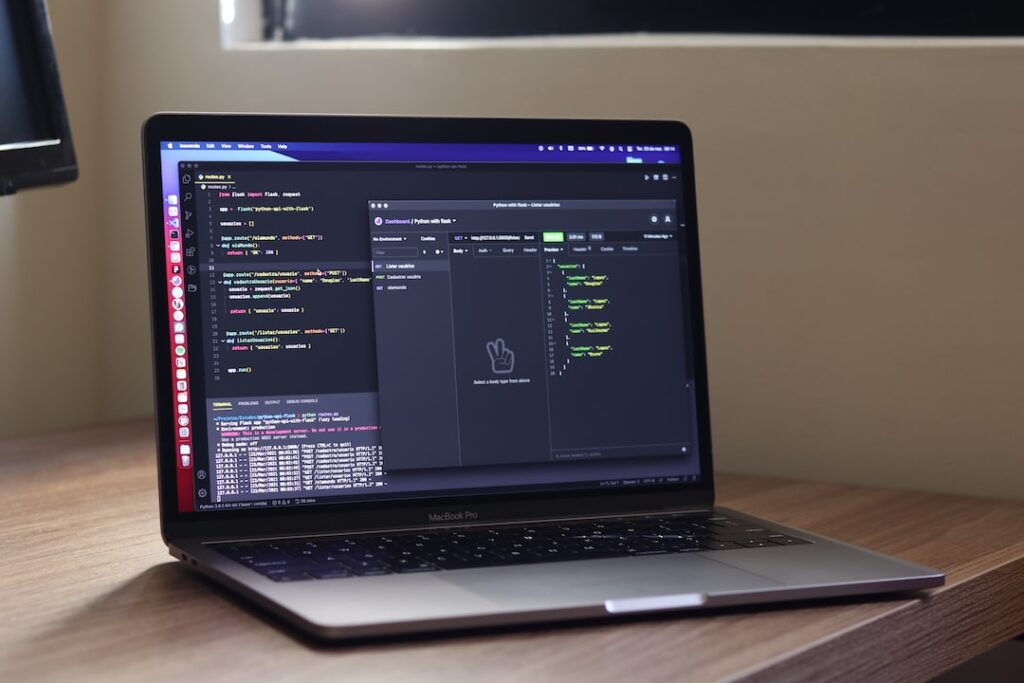
Ensuring robust cloud security is paramount for organizations of all sizes. The integration of ChatGot AI technology presents a cutting-edge solution to enhance cloud security measures. By leveraging the power of artificial intelligence, ChatGot offers proactive threat detection, real-time monitoring, and rapid incident response capabilities. This innovative integration not only strengthens defenses against evolving cyber threats but also streamlines security operations for improved efficiency and effectiveness. As cyber attacks grow in complexity and frequency, businesses must adopt advanced security solutions to safeguard their valuable data and infrastructure. Through the incorporation of ChatGot AI into existing cloud security frameworks, organizations can achieve a higher level of protection, reduce vulnerabilities, and stay ahead of potential risks. Join us on a journey to explore how the fusion of cloud security and AI technology can revolutionize the way we defend against digital threats.
Understanding Cloud Security
Importance of Securing Data in the Cloud
Where data is the new currency, securing data in the cloud is paramount. The shift to cloud computing has revolutionized how businesses operate, offering scalability, flexibility, and cost-efficiency. However, this convenience comes with significant risks, making data security a top priority. This segment will delve into the critical reasons why organizations must safeguard their data in the cloud, emphasizing the protection of sensitive information, compliance with regulations, and maintaining customer trust.
Common Cloud Security Challenges
Despite the benefits of cloud technology, organizations face a myriad of security challenges. Data breaches, account hijacking, insecure interfaces, and compliance violations pose serious threats to data integrity and confidentiality. Addressing these challenges requires a proactive approach, including robust security protocols, employee training, and continuous monitoring. This section will explore the most prevalent cloud security challenges in detail, offering insights on how businesses can effectively mitigate risks and strengthen their overall security posture.
Overview of Different Cloud Security Measures
To combat the ever-evolving threat landscape, a variety of cloud security measures have been developed to enhance data protection. Encryption, access control, network security, and security incident response are fundamental components of a comprehensive cloud security strategy. Additionally, emerging technologies like artificial intelligence and machine learning are being utilized to bolster security defenses and detect anomalies in real-time. This segment will provide a comprehensive overview of the latest cloud security measures and best practices, equipping organizations with the knowledge to build a resilient security framework. By adopting a multi-layered approach to security, businesses can minimize vulnerabilities, thwart cyber attacks, and uphold the trust of their stakeholders.
Rising Need for Advanced Security Measures
The importance of advanced security measures cannot be overstated. With the rapid evolution of cyber threats in cloud environments, traditional security approaches are proving to be inadequate in safeguarding sensitive data and critical systems. As a result, there is a rising demand for intelligent security solutions that can proactively protect against sophisticated attacks and ensure a secure computing environment.
Evolution of Cyber Threats in Cloud Environments
Cloud computing has revolutionized the way organizations operate by providing scalable and flexible IT resources. However, this shift to the cloud has also opened up new avenues for cybercriminals to exploit. Cyber threats have become increasingly complex and targeted, with attacks ranging from ransomware to data breaches. As more data is stored in the cloud, the need for robust security measures has never been greater.
Limitations of Traditional Security Approaches
Traditional security approaches, such as firewalls and antivirus software, are no longer sufficient to defend against modern cyber threats. These tools often rely on known signatures and patterns to identify malicious activities, making them ineffective against zero-day attacks and sophisticated malware. Moreover, the perimeter-based security model is becoming obsolete in the era of remote work and cloud computing, where traditional boundaries are blurred.
Demand for Intelligent Security Solutions
To address the shortcomings of traditional security measures, there is a growing demand for intelligent security solutions that leverage advanced technologies like artificial intelligence and machine learning. These solutions can analyze vast amounts of data in real-time to detect anomalies and potential threats before they cause harm. By adopting a proactive and adaptive security posture, organizations can better protect their assets and mitigate risks in an increasingly interconnected world.
Challenges in Implementing Advanced Security Measures
While the need for advanced security measures is clear, the implementation poses challenges. One major hurdle is the shortage of cybersecurity talent to deploy and manage sophisticated security solutions effectively. Additionally, the complexity of modern IT environments, including hybrid cloud setups and IoT devices, complicates security integration and monitoring.
The Role of Compliance and Regulations
In the realm of cybersecurity, compliance with industry regulations and data protection laws is crucial. Organizations must not only focus on technological solutions but also ensure that their security practices align with legal requirements. Failure to comply with regulations can result in severe penalties and reputational damage, emphasizing the importance of a comprehensive security strategy.
Looking Ahead: Future Trends in Security
As cyber threats continue to evolve, the future of security lies in proactive defense mechanisms and threat intelligence. Technologies like Security Orchestration, Automation, and Response (SOAR) are gaining prominence for their ability to streamline incident response and enhance security operations. Moreover, the integration of security into DevOps processes, known as DevSecOps, is becoming essential for building secure applications from the ground up.
The rising need for advanced security measures underscores the urgency for organizations to invest in innovative security solutions that can keep pace with evolving cyber threats. By staying ahead of potential risks and embracing a holistic security strategy, businesses can fortify their defenses and safeguard their digital assets in an ever-changing threat landscape.
Introduction to ChatGot AI
Overview of ChatGot AI capabilities
ChatGot AI is a cutting-edge artificial intelligence tool that is revolutionizing the field of cloud security. Its advanced capabilities include real-time threat detection, behavior analysis, anomaly detection, and predictive analytics. These features empower organizations to proactively protect their data and systems from a wide range of cyber threats, including malware, phishing attacks, and insider threats. By leveraging the power of AI, ChatGot AI enhances security operations by providing actionable insights and automated response mechanisms, thereby strengthening the overall security posture.
Integration benefits in cloud security
One of the key advantages of integrating ChatGot AI into existing cloud security systems is the seamless collaboration between AI-driven technologies and traditional security measures. This integration enables organizations to create a more resilient and adaptive security framework that can effectively combat the evolving threat landscape. By combining the strengths of human expertise with AI capabilities, organizations can achieve a more comprehensive and proactive approach to cybersecurity. Moreover, the integration of ChatGot AI streamlines security operations, optimizes resource allocation, and improves incident response times, leading to enhanced protection of critical assets.
ChatGot AI’s role in threat detection
ChatGot AI plays a pivotal role in threat detection by continuously monitoring network traffic, user behavior, and system activities in real time. Its sophisticated algorithms can identify suspicious patterns, anomalies, and potential threats with high accuracy, enabling security teams to respond swiftly and decisively. By leveraging ChatGot AI’s threat detection capabilities, organizations can mitigate risks, prevent data breaches, and maintain regulatory compliance. Furthermore, the proactive threat hunting features of ChatGot AI empower organizations to stay ahead of cyber adversaries, detect emerging threats early, and proactively defend against cyber attacks.
Future of ChatGot AI in Cloud Security
Looking to the future, ChatGot AI is poised to lead the evolution of cloud security by introducing innovative features and functionalities. As the cybersecurity landscape continues to evolve, ChatGot AI remains committed to advancing its AI algorithms, enhancing threat intelligence capabilities, and expanding its integration with emerging technologies such as blockchain and IoT security. By staying at the forefront of AI innovation, ChatGot AI aims to empower organizations to address complex security challenges, adapt to new threats, and safeguard their digital assets effectively. The future of cloud security with ChatGot AI holds immense promise, as organizations embrace AI-driven solutions to secure their environments and stay resilient in the face of cyber threats.
Implementing ChatGot AI in Cloud Security
Steps for Seamless Integration
Incorporating ChatGot AI into cloud security systems is a strategic move that requires careful planning and execution. To ensure a smooth integration process, organizations should follow these key steps:.
-
Assess Current Security Infrastructure: Before integrating ChatGot AI, it is essential to evaluate the existing security infrastructure to identify any gaps or areas that can be enhanced by AI capabilities.
-
Define Integration Goals: Clearly define the objectives and goals of integrating ChatGot AI into the cloud security framework. Whether it is to enhance threat detection, improve incident response times, or streamline security operations, having a clear roadmap is crucial.
-
Select Appropriate AI Models: Choose AI models that are tailored to address specific security needs. Customizing the AI algorithms to detect anomalies, prevent data breaches, or analyze security logs can significantly enhance the overall security posture.
-
Pilot Testing and Evaluation: Conduct pilot tests to evaluate the performance of ChatGot AI in real-world scenarios. Monitor its effectiveness in detecting threats, responding to incidents, and adapting to evolving security challenges.
-
Training and Knowledge Transfer: Provide training to security teams on how to leverage ChatGot AI effectively. Knowledge transfer ensures that the AI system is utilized to its full potential and that security analysts can interpret and act upon AI-generated insights.
Customizing AI for Specific Security Needs
One of the strengths of ChatGot AI lies in its ability to be customized to meet specific security requirements. Organizations can tailor the AI system to address unique threats, compliance standards, and operational preferences:.
-
Fine-Tuning Algorithms: Adjust the AI algorithms to focus on detecting specific types of threats or anomalies relevant to the organization’s industry or environment.
-
Integrating with Security Tools: Seamlessly integrate ChatGot AI with existing security tools and platforms to create a unified security ecosystem. This integration enhances visibility, coordination, and response capabilities.
-
Automating Routine Tasks: Customize ChatGot AI to automate routine security tasks such as log analysis, incident triaging, and compliance checks. By automating these tasks, security teams can focus on more strategic initiatives.
Monitoring and Optimizing AI Performance
Continuous monitoring and optimization are essential to ensure that ChatGot AI operates at peak performance and delivers tangible security benefits:.
-
Performance Metrics: Define key performance indicators (KPIs) to measure the effectiveness of ChatGot AI. Metrics such as detection accuracy, response times, and false positive rates help in evaluating AI performance.
-
Real-Time Alerts and Notifications: Implement real-time alerts and notifications to promptly address any issues or anomalies detected by ChatGot AI. Quick responses enhance security incident management and minimize potential risks.
-
Feedback and Iterative Improvements: Gather feedback from security analysts, end-users, and AI monitoring systems to identify areas of improvement. Use this feedback to iteratively enhance ChatGot AI’s capabilities and adapt to evolving security threats.
By following these steps and best practices, organizations can successfully implement ChatGot AI in cloud security and strengthen their overall cyber defense mechanisms.
Real-world Scenarios of ChatGot AI Success
Case Studies Showcasing AI Impact on Security
-
Financial Institution Safeguarding: Discover how a prominent financial institution thwarted a sophisticated cyber attack with the help of ChatGot’s AI algorithms, which detected and neutralized the threat in real-time.
-
Healthcare System Protection: Explore a case study where a healthcare system significantly enhanced its data protection protocols by implementing ChatGot’s AI-driven security solutions, resulting in a notable decrease in security incidents.
Quantifiable Benefits of AI-Driven Security
-
Reduction in Response Time: Learn about the tangible benefits of AI in security operations, such as the rapid detection and mitigation of security threats, leading to a substantial reduction in response time.
-
Cost-Efficiency: Delve into how AI-driven security solutions have not only improved security effectiveness but also proved to be cost-efficient in comparison to traditional security measures.
Lessons Learned from AI Implementation
-
Integration Challenges: Uncover the common challenges organizations face when integrating AI into their security infrastructure and how ChatGot offers insights into overcoming these hurdles.
-
Continuous Learning: Gain insights into the importance of continuous learning and adaptation in the realm of AI-driven security, as highlighted by experiences from ChatGot’s implementation journeys.
Through these illuminating case studies and discussions on the benefits and challenges of AI-driven security, it becomes evident that ChatGot’s AI success stories serve as a testament to the transformative power of AI in safeguarding organizations against evolving cyber threats.
The success of ChatGot’s AI solutions extends beyond specific industries, showcasing adaptable and scalable security measures that address the evolving landscape of cyber threats. By leveraging cutting-edge AI algorithms, ChatGot enables organizations to proactively detect and respond to security incidents, ensuring comprehensive protection of sensitive data and critical systems. Additionally, the implementation of AI-driven security not only enhances operational efficiency but also empowers organizations to stay ahead of cybercriminals by predicting and preventing potential threats.
Furthermore, the quantifiable benefits of AI in security operations go beyond immediate threat mitigation. The utilization of AI algorithms results in enhanced threat intelligence, enabling organizations to make informed decisions regarding their security posture. This data-driven approach not only enhances incident response capabilities but also facilitates strategic planning to mitigate future risks.
The success of ChatGot’s AI-driven security solutions underscores the necessity for organizations to embrace AI as a fundamental component of their cybersecurity strategy. By learning from real-world scenarios, quantifying the benefits, and addressing implementation challenges, organizations can harness the full potential of AI to fortify their security defenses and safeguard against the ever-evolving threat landscape.
Future Prospects of AI-Enabled Cloud Security
Emerging Trends in AI and Cloud Security.
The Intersection of AI and Cloud Security: A Bright Future Ahead
As technology continues to advance at a rapid pace, the intersection of artificial intelligence (AI) and cloud security is shaping up to be a game-changer in the cybersecurity landscape. Emerging trends in AI and cloud security are paving the way for a more secure and efficient digital environment.
Potential Advancements in AI Security Applications
AI-Powered Threat Detection: A New Era of Cyber Defense.
One of the key areas where AI is revolutionizing cloud security is in threat detection. AI-powered tools can analyze vast amounts of data in real-time, enabling organizations to detect and respond to cyber threats more effectively. With the potential advancements in AI security applications, we can expect to see more sophisticated threat detection mechanisms that can proactively identify and neutralize security risks.
Predictions for the Future Landscape of Cloud Security
Securing the Future: AI as the Cornerstone of Cloud Security.
Looking ahead, the future landscape of cloud security is likely to be heavily influenced by AI. From automated incident response systems to predictive analytics for risk management, AI is set to play a central role in enhancing the security posture of organizations. As we move towards a more interconnected and data-driven world, the integration of AI-enabled cloud security solutions will be crucial in safeguarding sensitive information and ensuring the resilience of digital infrastructures.
The future prospects of AI-enabled cloud security are promising, with emerging trends, potential advancements, and predictions pointing towards a more secure and robust cybersecurity ecosystem. By harnessing the power of AI in conjunction with cloud security measures, organizations can stay ahead of evolving threats and safeguard their digital assets effectively.
Enhancing Data Privacy with AI in Cloud Security
Data privacy has become a critical concern in today’s digital landscape. AI, with its ability to analyze and detect patterns in vast datasets, offers a unique opportunity to enhance data privacy measures within cloud security frameworks. By implementing AI-driven encryption techniques and access controls, organizations can better protect sensitive information from unauthorized access and breaches.
Mitigating Insider Threats through AI-Based Behavioral Analytics
Insider threats pose a significant risk to organizations, often going undetected by traditional security measures. AI-based behavioral analytics can help in identifying anomalous behaviors within organizational networks, flagging suspicious activities, and mitigating potential insider threats before they escalate. This proactive approach to threat detection can significantly bolster the overall security posture of cloud environments.
Adapting to Dynamic Threat Landscapes with AI-Driven Response Mechanisms
Cyber threats continue to evolve in sophistication and frequency, necessitating adaptive security measures. AI-driven response mechanisms, such as automated incident response systems and real-time threat intelligence, enable organizations to respond swiftly to emerging threats and vulnerabilities. By leveraging AI for dynamic threat analysis and response, organizations can effectively combat cyber adversaries and fortify their cloud security defenses.
The Road Ahead: AI-Enabled Cloud Security as a Competitive Advantage
As the digital landscape becomes increasingly complex, organizations that embrace AI-enabled cloud security will gain a competitive edge in safeguarding their assets and maintaining regulatory compliance. By investing in AI technologies for cloud security, businesses can not only enhance their overall security posture but also demonstrate a commitment to cybersecurity resilience and proactive threat mitigation. The future of cloud security lies in the seamless integration of AI capabilities to adapt, protect, and defend against evolving cyber risks, ensuring a secure and trusted environment for digital operations.
ChatGot AI and Compliance Standards
Ensuring Regulatory Adherence with AI Tools
Ensuring regulatory adherence has become a paramount concern for businesses worldwide. The integration of AI tools, such as ChatGot AI, plays a crucial role in helping organizations navigate the complex web of compliance standards and regulations. ChatGot AI offers a comprehensive suite of features designed to guarantee adherence to stringent data privacy and security regulations. From robust end-to-end data encryption to advanced multi-factor authentication mechanisms, ChatGot AI provides a secure environment for businesses to handle sensitive information with confidence. By aligning with key regulatory frameworks like GDPR, HIPAA, and others, ChatGot AI empowers organizations to maintain compliance while fostering trust among customers and stakeholders.
Compliance Benefits of AI Integration
The benefits of integrating AI into compliance processes are manifold and extend far beyond mere regulatory adherence. ChatGot AI’s AI-driven automation capabilities revolutionize traditional compliance practices by automating routine tasks, thereby reducing the risk of human error and enhancing operational efficiency. Additionally, the platform’s advanced analytics empower businesses to derive valuable insights from vast amounts of data, enabling them to identify emerging trends, predict potential risks, and proactively address compliance issues. This data-driven approach not only leads to cost savings but also enhances overall compliance outcomes, giving organizations a competitive edge in their respective industries.
Meeting Industry-Specific Security Requirements
One of the key strengths of ChatGot AI lies in its ability to customize security solutions to meet the unique needs of different industries. Whether it’s implementing stringent data encryption protocols for financial institutions, ensuring the confidentiality of patient information in healthcare settings, or fortifying online transaction security in e-commerce platforms, ChatGot AI offers industry-specific security measures that instill confidence and trust. By tailoring its solutions to align with industry standards and best practices, ChatGot AI enables businesses to navigate the intricacies of the regulatory landscape seamlessly, thereby achieving sustainable compliance and bolstering their reputations.
ChatGot AI emerges as a game-changer in the realm of compliance standards, not only by upholding regulatory requirements but also by empowering organizations to proactively address emerging challenges. Through its innovative AI technology, ChatGot AI equips businesses with the tools they need to build a culture of compliance, mitigate risks effectively, and lay a solid foundation for long-term success in an increasingly regulated environment.
Conclusion
Implementing ChatGot AI integration is a crucial step in enhancing cloud security. By leveraging advanced AI capabilities, organizations can proactively identify and mitigate security threats, improve incident response times, and strengthen overall cybersecurity posture. The seamless integration of ChatGot AI into cloud environments offers a cost-effective and efficient solution to safeguard sensitive data and ensure regulatory compliance. Embracing this technology will not only protect critical assets but also provide peace of mind to businesses and their customers in an increasingly digital world.







